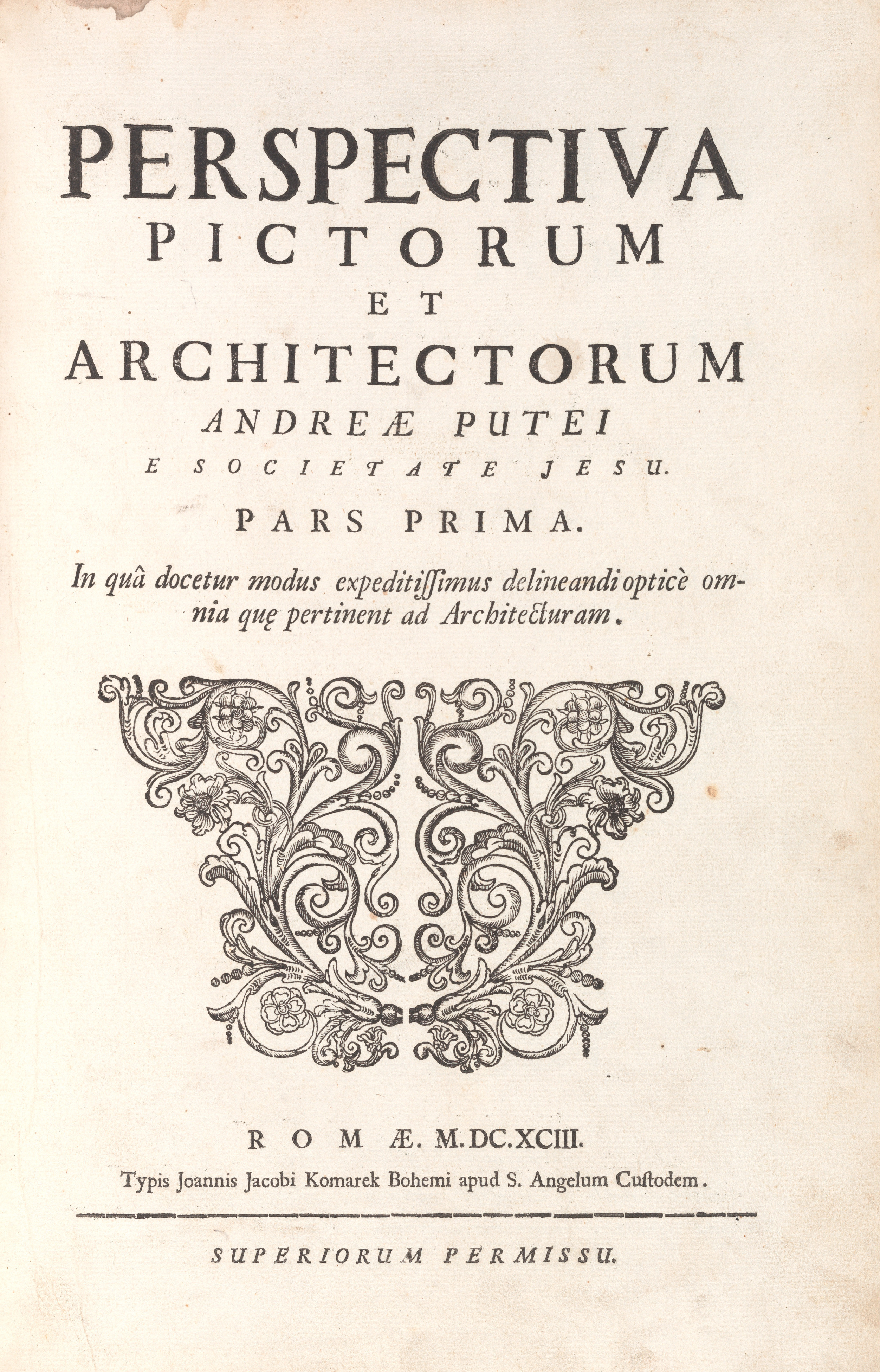Perspectiva pictorum et architectorum
Not on view
The pages of the treatise construct perspective views of increasing complexity and difficulty. The demonstrations display convincing architectural spaces as evidence of the author's belief that beauty in representation originates from suitably proportioned architecture.
The letterpress text, arranged in columns, provides Latin and Italian didactic explanation of the numbered plates. Despite a title page dated 1693, which would suggest this is the first edition, this example of Pozzo's treatise appears to date to a later printing. It may be either an example of a "second state" of the first edition version issued ca. 1698 during the preparation of Part II or a composite example that joins a second edition text and illustration behind a title page prepared for the first edition (see Fowler, 207). Komarek issued the fully revised second edition of Part I in 1700.
The text and illustrations vary between the first and second editions, and the inclusion of the engraving made after Pozzo's design of the false dome at Sant' Ignazio, Rome does not appear in the first edition. The engraving in this copy bears the date "1702" at the ... Further, the letterpress text on [109] verso provides the description of the perspectival figure on the tipped-in foldout leaf and constructs the relationship between the figure and locates the position of the image within an illustration of the plan of Sant' Ignazio (see figure 93). The other additions to the text elaborate Pozzo's extensive work at the church, which he completed from 1691-94 contemporaneously with the first edition of Part I.
Due to rights restrictions, this image cannot be enlarged, viewed at full screen, or downloaded.
This artwork is meant to be viewed from right to left. Scroll left to view more.







